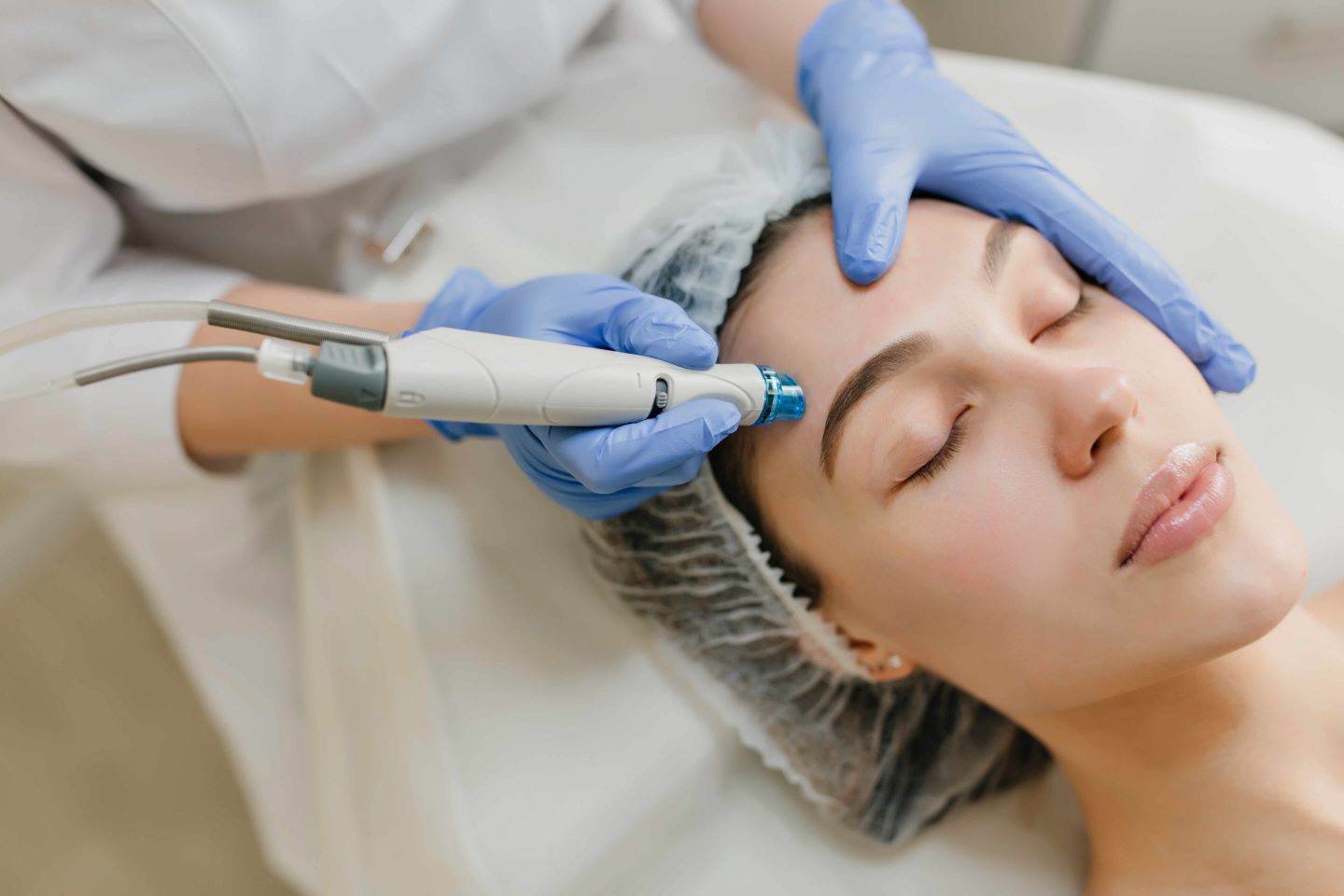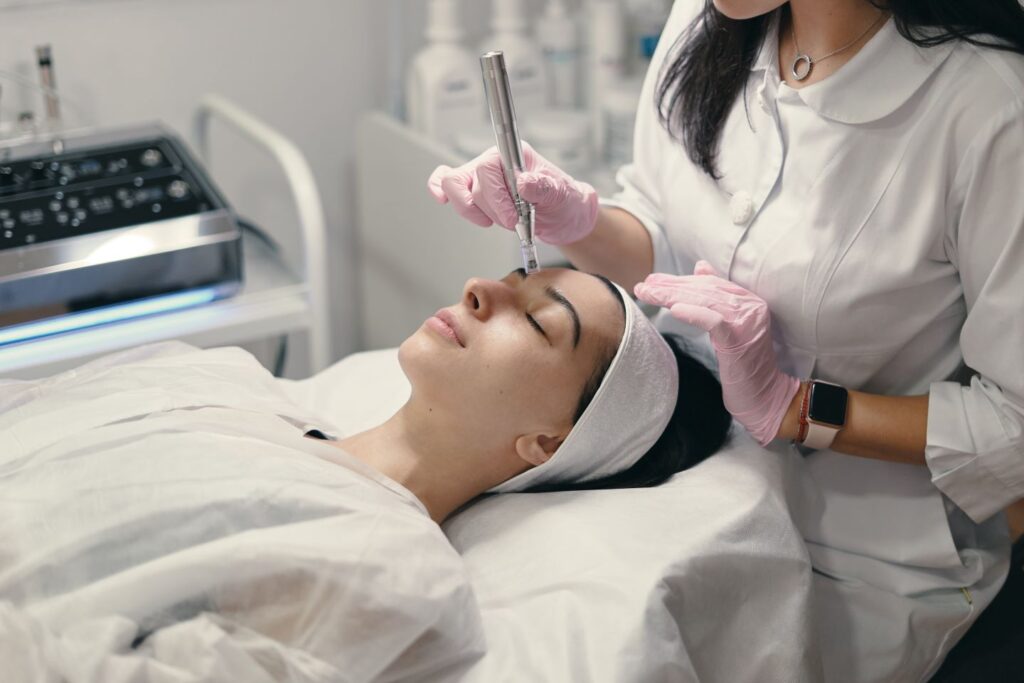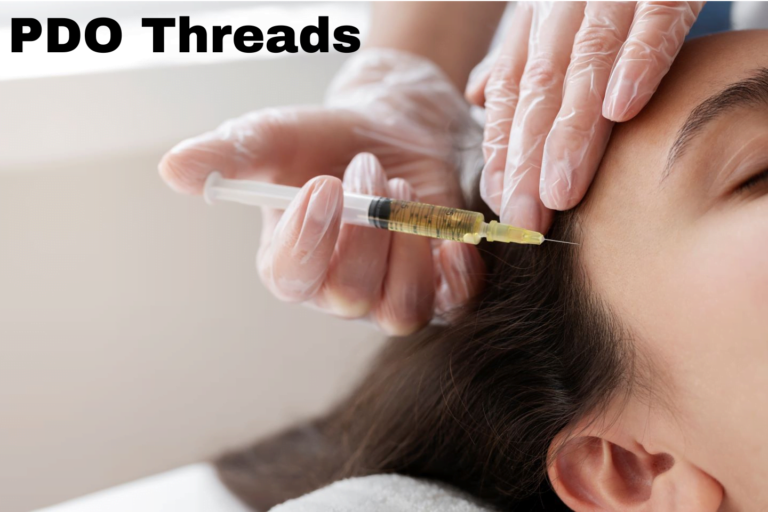What is Microneedling? Procedure, Benefits and Effectiveness

Collagen induction therapy, or microneedling, is a minimally invasive cosmetic technique that is gaining popularity due to its proven effectiveness in rejuvenating the skin. The proteins collagen and elastin give skin its suppleness and resilience, and this therapy tries to increase their synthesis.
What is Microneedling Procedure?
Microneedling involves the use of a device with very fine, sterile needles. Micro-injuries are produced on the skin’s surface by this tool, which is also known as a dermaroller or dermapen. These tiny punctures are crucial to the idea of microneedling. These microscopic tears in the skin initiate the body’s wound healing process by releasing cytokines and growth hormones.
The Science Behind Microneedling
What is microneedling science? Microneedling makes use of the fact that the human body has an innate capacity to repair wounds. After suffering damage, the body initiates a series of repair processes. Microneedling works by inducing a process known as neocollagenesis and neoelastinogenesis, in which the body produces more collagen and elastin in response to tiny lesions. The skin’s texture, fine lines and wrinkles, acne scars, and stretch marks can all benefit from this gradual increase in collagen and elastin.

Benefits of Microneedling
The advantages of microneedling are numerous.
- It’s effective on a wide variety of skin issues, including hyperpigmentation, stretch marks, acne scars, and wrinkles.
- It can improve the look of your skin’s texture and overall health, making you look younger and healthier.
- Furthermore, topical skin care product absorption can be enhanced by microneedling. These solutions are more effective since they can penetrate deeper thanks to the treatment’s microscopic channels.
Method of Microneedling How it Works
- A topical anesthetic is usually applied at the beginning of a microneedling session. As the gadget is pushed across the skin, thousands of tiny punctures are made. Depending on the size of the affected area, the procedure can take anywhere from 30 minutes to an hour.
- Sunburn-like transient redness and minor edema are possible side effects after the operation. To reduce these effects and promote even more rapid skin healing and renewal, calming elements like aloe vera and hyaluronic acid are frequently advised in skincare products.
Effectiveness and Safety
- Microneedling does not discriminate in terms of skin color or type. A skilled specialist should carry out the treatment to avoid problems and get the best outcomes.
- Numerous studies support micro needling’s effectiveness, demonstrating considerable changes in skin quality following microneedling before and after 1 treatment. However, you’ll need to schedule innumerable sessions a few weeks apart to see any improvement.

Pros of Microneedling
- Boosts Collagen Production: Microneedling improves skin texture, firmness, and tone by inducing the body to manufacture new collagen and skin tissue in response to a mild injury.
- Reduces Scars and Wrinkles: Two Proteins That Help Skin Look Younger, and Thus Reduces Visible Acne Scars and Wrinkles.
- Improves Skin Texture: Microneedling has been shown to improve the skin’s texture and diminish the appearance of big pores.
- Enhances Product Absorption: Microneedling’s tiny punctures can serve as small channels, facilitating the skin’s absorption of topical skin care products.
- Treats Various Skin Issues: Microneedling effectively treats various skin disorders, such as wrinkles, scars, acne, alopecia, hyperpigmentation, stretch marks, and rosacea.
Cons of Microneedling
- Possible Side Effects: Common adverse reactions include post-procedure redness, edema, and occasional light bleeding. Peeling and bruising are also possible outcomes. Scarring or infection may result in highly unusual circumstances.
- Not Suitable for Everyone: Microneedling may not be appropriate for people with a history of keloid scarring or disorders like psoriasis or eczema on their skin. Pregnant women are likewise discouraged from using it.
- Requires Multiple Sessions: It usually takes more than one session to see substantial benefits, which can be time-consuming and costly, depending on the severity of the skin concerns being treated.
- Temporary Results: Although micro-needling can produce visible benefits, these improvements are usually short-lived due to the inevitable aging of the skin. Maintaining outcomes typically requires continued treatment.
- Professional Supervision Required: Although micro-needling equipment may be used in the comfort of your home, expert supervision is necessary to guarantee that the operation is carried out correctly and securely. Injuries and inconsistent outcomes have been linked to misusing micro-needling devices.
Important Note: Consult a physician or aesthetician before beginning any treatment on your skin. Depending on a person’s skin type, current state, and medical history, they can offer tailored advice.
Conclusion for What is Microneedling?
For What is Microneedling? Microneedling is a non-invasive treatment that promotes skin renewal by activating the body’s own wound-healing mechanisms. It can treat a wide range of skin issues and improve the skin’s texture and appearance by increasing collagen and elastin production. If you want to know the benefits and hazards of any cosmetic operation for your skin, it’s best to talk to a dermatologist or other trained skincare practitioner.





